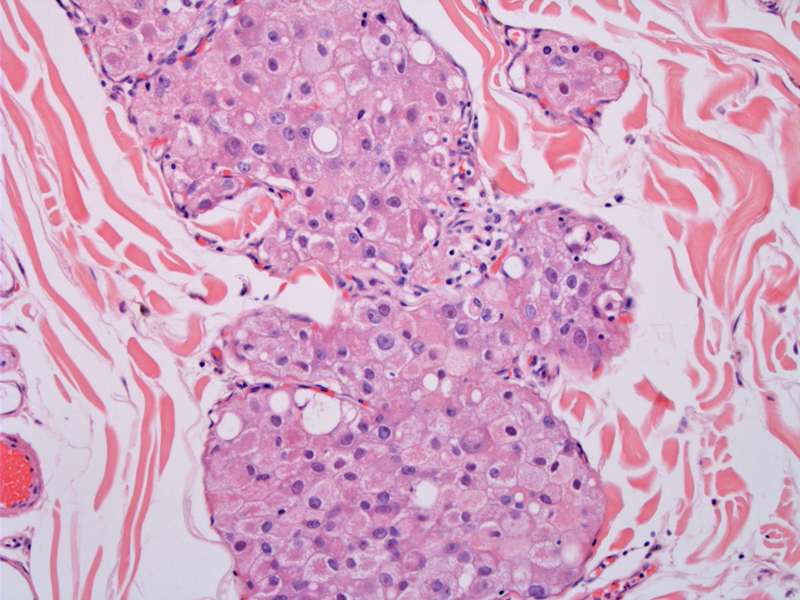

The differential diagnosis of this morphology includes secretory carcinoma, glycogen-rich carcinoma, apocrine carcinoma. Glycogen-rich breast carcinoma can be differentiated by the presence of PAS + diastase–sensitive glycogen.
Nests are seen here but tumor cells may also be arranged in cords and solid sheets. The nuclei are fairly irregular, with moderate atypia, usually containing one or more nucleoli of varying size.
Large polygonal cells are seen, with abundant foamy or multivacuolated cytoplasm, which may confer a clear-cell or lipoblast-like appearance to the neoplastic cells. The cells may contain oxyphilic cytoplasm, reminiscent of oncocytic or apocrine change as seen here.
Very rare.
In a review of 49 patients, the age ranged from 22 to 72 years (mean, 45)and symptoms included a breast mass or lump and nipple discharge. Axillary lymph node metastases were present in 79% of patients at the time of surgery (Shi). ER and PR are generally negative - 100% and 89.8% negative for estrogen and progesterone receptors, respectively, whereas 71.4% were positive for HER2 (Shi).
This tumor is associated with an aggressive clinical course and poor prognosis: the majority present with positive lymph nodes and distant metastases. Overall survival rates at 2- and 5-year are 64.6% and 33.2% in one study(Shi)and in an older study, a 38.5% first-year mortality rate was reported (Ramos).
Lipid rich adenocarcinoma is an aggressive tumor
Most tumors are ER and PR negative
• Invasive Carcinoma - Special Types : Apocrine Carcinoma
Shi P, et al. Lipid-rich carcinoma of the breast. A clinicopathological study of 49 cases. Tumori. 2008 May-Jun;94(3):342-6.
Ramos, C. V. and H. B. Taylor . Lipid-rich carcinoma of the breast: a clinicopathologic analysis of 13 examples. Cancer 1974. 33:812–819.
